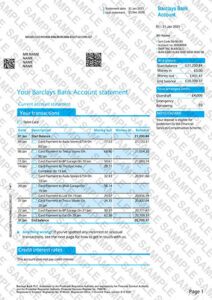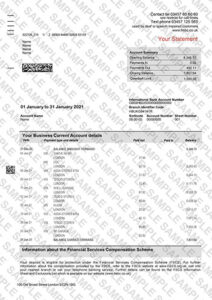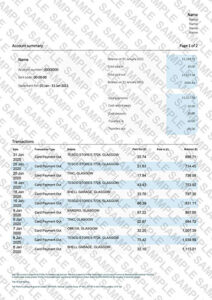Introduction to Bank Statements
What is a bank statement?
Ever wondered how to keep track of all your bank transactions? Enter the bank statement, a monthly or quarterly document provided by banks to account holders. It details all transactions, including deposits, withdrawals, fees, and any other account activity.
Importance of bank statements
Bank statements serve as a financial footprint. They’re vital for:
- Budgeting and financial planning
- Loan or mortgage applications
- Proof of income or savings
- Tax-related purposes
Components of a Typical Bank Statement
Account details
This section lists personal details like your name, address, account number, and the statement period. Always ensure these details are accurate. Spot an error? Get in touch with your bank immediately – create fake bank statement now!
Transaction history
Remember that coffee you bought last week? Or the online shopping spree you indulged in? Every credit and debit is recorded here, complete with transaction dates, merchant names, and amounts.
Account summary
At a glance, this section provides the opening and closing balances, total deposits, total withdrawals, and any incurred fees or interests.
How to Obtain a Bank Statement
Traditional banking
Traditionally, banks would mail monthly statements to account holders. However, with the rise of digital banking, this method has become less common. Still, you can request a printed statement in-branch or via phone.



Online banking
Many of us prefer the convenience of online banking. Simply log into your account, navigate to the ‘Statements’ section, and download a PDF version. Easy, right?
Mobile banking apps
Can’t get to a computer? Most banks offer mobile apps. With a few taps, you can view, download, or even email your statement.
Reading a Bank Statement Effectively
Deciphering codes and abbreviations
Does “POS” or “ATM WDL” look familiar? Banks use various codes and abbreviations to categorize transactions. While these might seem confusing at first, most banks provide a legend or key.
Monitoring your finances
Ever heard the saying, “Watch the pennies, and the pounds will look after themselves”? Regularly reviewing your bank statement helps identify unauthorized transactions, excessive fees, or even habits that could drain your savings.
Conclusion
Creating and understanding a bank statement might seem like a mundane task, but it’s crucial for your financial well-being. Whether you’re old-school with paper statements or prefer digital versions, the goal remains: stay informed and stay on top of your finances.
FAQs
- How often should I check my bank statement?
Ideally, review your statement monthly. This ensures any discrepancies are spotted and resolved quickly. - Are digital bank statements as valid as paper ones?
Absolutely! Whether you download it or receive a paper copy, both are legitimate records of your account activity. - I spotted an unauthorized transaction. What now?
Contact your bank immediately. They can guide you on the next steps, which might include disputing the transaction or securing your account. - Can I get old bank statements?
Most banks keep records for up to 7 years. Check with your bank regarding retrieval methods and any associated fees. - Why do some transactions take longer to appear on the statement?
Some merchants might delay processing transactions, especially during weekends or holidays. Always keep personal records to cross-reference.
